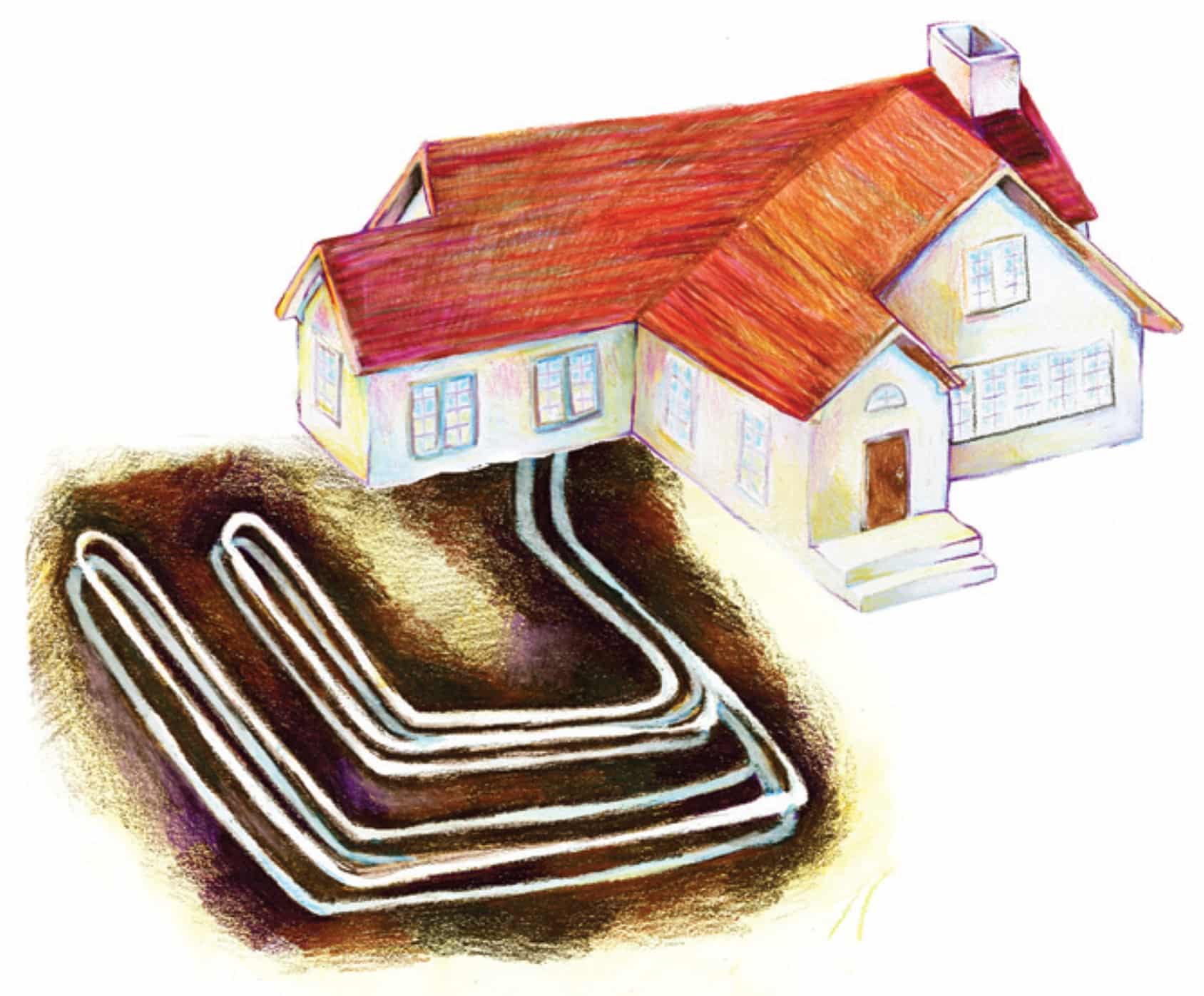How Does Geothermal Work?
No matter what climate you live in, the temperature throughout the year varies. For some climates that means blazing summers that cool to frigid winters. What many people don’t realize is that the temperature below ground (regardless of climate or season) stays fairly consistent all year. While air temperatures can vary greatly from day to night or winter to summer, the temperature just a few feet below the earth’s surface stays an average 55°-70°F year-round.
The World's Best Solar Collector
The ground is able to maintain temperature consistency because it absorbs 47% of the sun’s heat as it hits the Earth’s surface. Geothermal systems are able to tap into this free energy with a series of underground pipes called an earth loop. This technology is used to provide your home or office with access to an infinite energy source for heating, air conditioning, and hot water.
As outdoor temps fall, a GHP draws from an underground reservoir of heat, concentrates it, and moves it to your home. Meanwhile, an ordinary heat pump collects heat from frigid winter air, making it least efficient when you need it to be the most. And unlike a furnace, geothermal units don’t create heat through combustion. They simply collect and move it.
Geothermal Heating
Geothermal Air Conditioning
As outdoor temps rise, a GHP collects the unwanted heat in your home and moves it to the cooler earth. Ordinary heat pumps and air conditioners dump that heat outside, but, unfortunately, hot summer air is already saturated with heat and is less willing to accept more. That makes ordinary cooling systems least efficient when you need them to be the most.
As a geothermal unit runs, it can capture heat that would normally go to waste and divert it to your water heater tank (using an optional component called a desuperheater). Your unit can generate up to 50% of your hot water—at almost no cost. For hot water generation you have the option of installing the iGate Smart Tank that can communicate with a Trilogy 45 Q Mode heat pump to deliver all the home’s hot water needs with five times the efficiency of a traditional electric water heater.
Hot Water Assist & Hot Water Generation
Infinite Energy For Every Home
A geothermal system uses small-diameter, High-Density Polyethylene (HDPE) pipes buried underground called a “loop.” The loop circulates water to move heat energy to and from your home. It’s the heart of a geothermal system and its biggest advantage over ordinary heat pumps, air conditioners and fossil fuel furnaces. The type of loop is based on available space, ground composition and installation costs for specific areas.
Types of Loops
We’re here to help you decide which would work best with your landscape.

Horizontal
Often used when adequate land surface is available. Depending on geothermal system needs and space available, pipes are placed in trenches that range in length from 100 to 400 feet.

Vertical
The ideal choice for a geothermal heat pump when available land surface is limited. Well drilling equipment is used to bore small-diameter holes from 100 to 400 feet deep.

Pond
Very economical to install when a large body of water is available for use by the geothermal heating and cooling system. Coils of pipe are simply placed on the bottom of the pond or lake to capture the geothermal energy.
